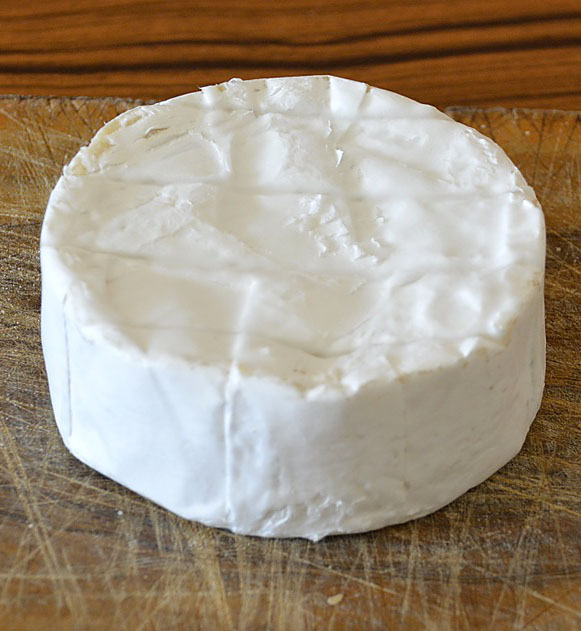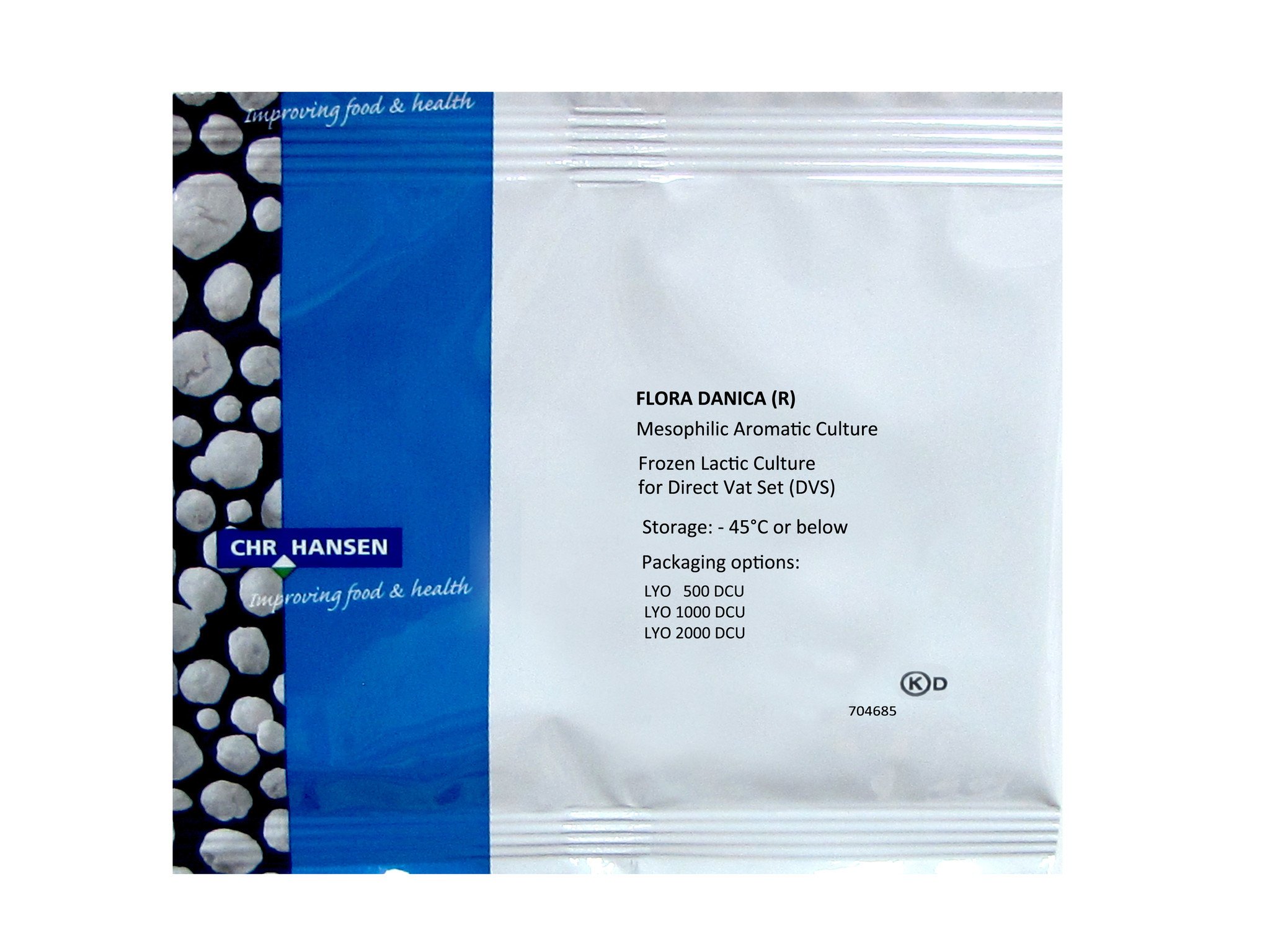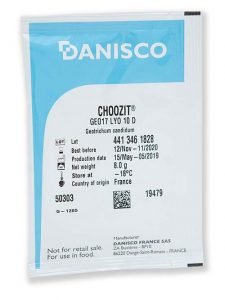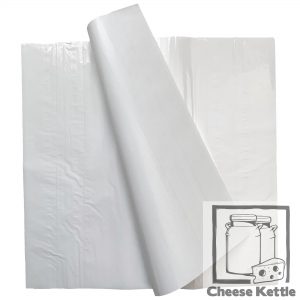Camembert is a soft, moist and creamy cheese. It has a bloomy rind and a slightly runny interior. This soft ripened cheese can be baked, fried or simply enjoyed with crackers, bread, fruit and wine. Here’s how you can make your very own Camembert. from home.
Yield: 900g
Aging: less than 2 months
INGREDIENTS
1. Full Cream Milk (7.5 L)- Don’t use UHT/ UP milk
2. ¼ tsp Flora Danica and 1/8 tsp MM100
3. 1/8 tsp Penicillium Candidum
4. 1/32 tsp GeotrichumCandidum
5. ¼ tsp rennet
6. 4 tsp cheese salt
7. ¼ tsp Calcium Chloride (Use this if you’re using pasteurized milk)
EQUIPMENT
1. large pot
2. thermometer
3. curd knife/ curd cutter
4. ladle or spoon for stirring
5. colander
6. cheese cloth
7. 4 cheese hoops
8. 5 draining mats
9. 5-6 pieces of square wood/ rigid plastics
Buy this bundle at the Cheese Kettle Shop
Flora Danica
This mesophilic starter culture is a mix of lactic acid producing bacteria. You can also use Flora Danica for making Gouda, Samsoe and Blue cheese.
Danisco SAM 3
This pack of Penicillium Candidum is a white mold powder used to mature and flavor your camembert. It provides the Camembert with a moderate proteolytic action, moderate lipolytic (aroma), and medium surface thickness and height. It also helps accomplish a moderate- quick aging time.
Danisco Geo 17
Geotrichum Candidum gives the Camembert a mold like appearance and an extremely mild flavor and aroma. It upgrades the appearance and movement of Penicillium Candidum strains and helps limit proteolysis and lengthen the storage time of ripened cheese.

BioproxGeotrichumCandidum 1 (GC65)
Bioprox GC65 is another Geotrichum Candidum you can use instead of Danisco Geo 17.
Cheese Hoop/ Cheese Mold
This cheese mold is perfect for draining cheese soft ripened cheeses.
Dimensions: 155mm base diameter and 75 mm height
Cheese Wrapping Paper
White mould micro-perforated wrapping paper perfect for cheeses like Camembert, Brie and soft goat cheeses.
INSTRUCTIONS
1. Sterilize the materials you need.
2. If using calcium chloride, add it to the milk before heating. Stir well.
3. Heat the milk to 320 C.
4. Once you reach the target temperature, add the Penicillium Candidum, Flora Danica and Geotrichum Candidum. Allow the powder to rehydrate for 2 minutes. Stir well for 1 minute to make sure the cultures are well-mixed. Maintain the heat at 320 C throughout this process.
5. Let the milk sit and ripen for 90 minutes. Continue to maintain the temperature at 320 C.
6. Add the rennet and stir in an up and down motion for 1 ½ minutes. This way of stirring will ensure that the rennet is completely mixed with the milk and avoid chunky pieces in your Camembert.
7. Cover the milk and let it sit for another 60 minutes.
8. Check for a clean break. Slide your knife into the curd at an angle and lift the side of the blade. The curds should break cleanly around the knife and the whey runs into the crack you made.
9. Cut the cheese into ½-inch cubes using a curd knife or curd cutter.
10. Gently stir the curds in an up and down motion for 15 minutes.
11. Let it sit again for 15 minutes. You will notice most of the curds drop to the bottom.
12. Pour the whey up to the level of the curds.
13. Place the cheese hoops on the draining mats.
14. Fill the cheese hoop with curds. You’ll notice the curds shrink as the whey drains. Just continue to fill the hoops up with the remaining curds.
15. Cover the hoops with a draining mat and let the whey to drain out for an hour.
16. Put a board on top of the draining mat and flip the hoops over.
17. Continue to flip the cheese once every hour for 4 to 5 hours.
18. Remove the cheese from the mold. Lightly sprinkle and rub the cheese salt all around the cheese.
19. Let the cheese stand for 10 minutes to allow the salt to dissolve.
20. Cover the cheese with a draining mat or paper towel and let it dry for 24 hours at room temperature (200 C to 250 C).
21. Place the cheese in an aging container covered with the draining mat and store at 110 C to 150 C for 8 to 10 days. Turn the cheese over once daily.
22. After 10 days, you’ll notice a felt like mold growth on the surface of the cheese. This is the P. Candidum.
23. Wrap the Camembert with cheese wrapping paper and place it back in the aging container. Move it to a cool space of 40 to 70 C.
24. Ripen the cheese for 2 to 4 weeks.
25. Your Camembert should be soft and creamy after 4 weeks. It bulges slightly when cut.
CAMEMBERT NUTRITION FACTS
This creamy cheese first made in France is packed with vitamins and nutrients. Camembert is high in riboflavin, protein, calcium and phosphorus. It also has a high content of vitamin A, vitamin B12, selenium, zinc, folate and other minerals.
5 WAYS TO ENJOY CAMEMBERT
Camembert is truly a decadent delight. If you’re a Camembert lover, here are 5 ways to best enjoy it.
1. Enjoy it with a glass of Normandy cider or Calvados, a crusty baguette, fruits and nuts like pecans and hazelnuts.
2. Baked garlic and herb Camembert
4. Honey Camembert with bacon and rosemary






